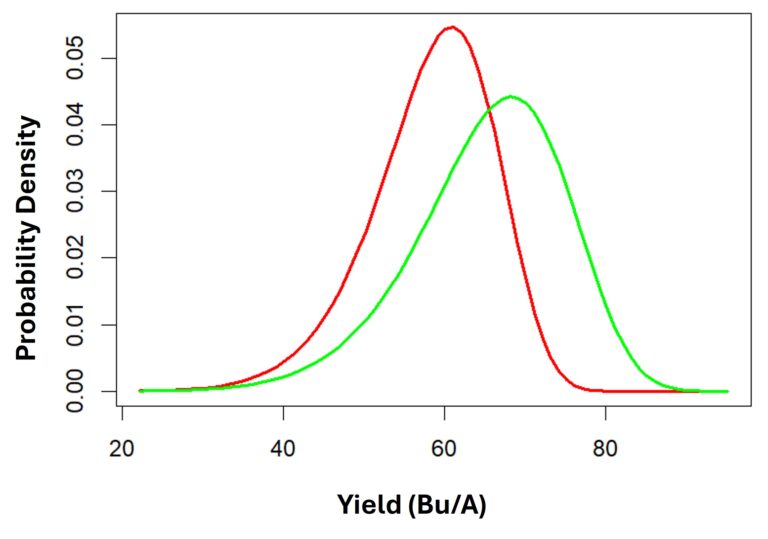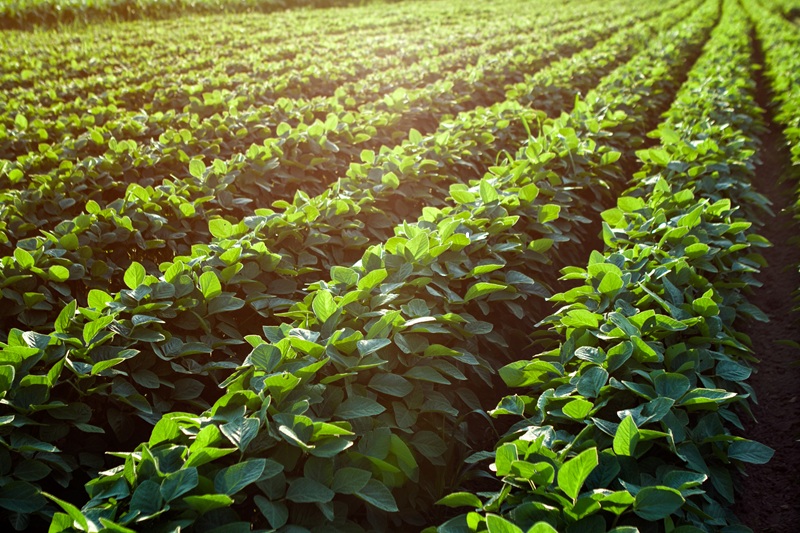Stop Planting Flat-Rate Soybeans. There’s a Smarter Way to Boost Profitability…
When it comes to soybeans, most growers are confident in their routine — same seeding rate across the board, fertility program dialed in, and maybe some tweaks based on yield maps or field history. But despite that effort, soybean yields still swing — not just year to year, but field to field and acre to acre.
The frustrating part? It’s not always clear why.
The answer usually comes down to one thing: environmental variability. And when we say “environmental variability,” we mean the environment within the soil profile.
Different parts of the field retain or shed soil moisture differently, have varying levels of organic matter and can vary significantly in terms of slope (or elevation). But most soybean crop management strategies ignore these differences — and that’s where the opportunity for optimum profitability starts fading away.
As Jon Fridgen, Chief Science Officer with Advanced Agrilytics explains:
“You can’t manage soybeans the same way across every acre and expect uniform results. Some environments need more seed to maximize node development, others less. It’s all about how that plant responds to the environment it’s in.”
If you’re flat-rating your soybean program across a 1,000-acre farm, you’re almost certainly over-investing in some places, under-investing in others — and leaving a significant amount of yield potential unrealized.
Precision ROI — Letting the Environment Lead the Way
At Advanced Agrilytics, we treat soybeans like the high-potential crop they are — and we manage them with the same environmental intelligence as corn.
We use spatial layers that go far beyond traditional field maps — because your field isn’t one flat, uniform landscape. Every acre responds differently to weather, fertility, and planting decisions, and crop management plans that produce average (or below-average) yields are unsustainable, especially in today’s rough ag economy. These environmental layers help us tailor recommendations that fit how your field actually behaves:
- Soil Wetness Index (SWI): Identifies how water moves and holds across the field, helping adjust seeding rates and input timing to optimize plant growth and production, even in areas prone to over-saturation or drought.
- Organic Matter and CEC: These factors influence the soil’s nutrient-holding capacity and productivity potential, which, in turn, affect fertility and seeding decisions.
- Elevation and slope: Topography affects water runoff, erosion risk, and nutrient mobility — factors that are especially important for managing soybeans in areas with knobs or hills, or other terrain variations.
- Yield potential, node development, and VPI (Variety Profile Index): These factors help us understand how different environments build yield — whether through the main stem or branching — and guide decisions on seeding rate and variety selection.
The goal? Maximize each acre’s ability to deliver yield — and avoid wasting inputs where they won’t pay you back.
With that information, we write soybean seeding prescriptions that are tailored to maximize ROI per environment — placing more seed in areas where plant attrition is high or where node development needs a boost and decreasing seeding populations where fewer seeds can still maximize output.
“When you know which areas are prone to lodging and which ones struggle with early-season vigor,” says Fridgen, “you can tailor your strategy to give each acre what it needs — not what it doesn’t.”
And it’s not just about seeding. Fertility, too, plays a massive role in soybean ROI. Water-limited acres often require a different potassium and phosphorus strategy than stable zones. When you build those fertility plans by environment, not by flat rate, you stop overspending — and you stop underfeeding the areas of the acre that actually need it.
The Results — Smarter Soybean Strategy, Better ROI
Here’s what growers are seeing when they take a spatial approach to soybean management:
- 3.5x ROI by year four, with gains growing over time
- $46/acre more by year four, and up to $61/acre by Year 10
Earlier this year, Dr. Kess Berg, Chief Innovation Officer with Advanced Agrilytics, presented the findings of an analysis performed by the company’s data science team at our winter Agronomy Showcase meetings. Led by Chief Science Officer Jon Fridgen, the team analyzed 10 years of yield performance and crop insurance data across Advanced Agrilytics customers, focusing on data from customers who are utilizing our full-service offerings (variable-rate nitrogen management, seeding, variable-rate nitrogen stabilizer prescriptions, lime/phosphorus/potassium prescriptions, etc.), and compared them with USDA benchmarks.
Specifically, our data science experts examined county yield data from the USDA National Agricultural Statistical Service (NASS) and crop insurance experience data from the USDA Risk Management Agency (RMA).
Here’s a peek at the overall soybean yield improvements our customers have seen:
Figure 1: Overall Soybean Results
We see a significant rightward shift in the yield distribution after the Advanced Agrilytics predictive agronomic method was implemented, meaning a reduction in yield variability across all of the Advanced Agrilytics-managed acres. There was also a substantial reduction in the left tail of the graphic, indicating that approximately 4.7 Bu/A of soybeans were removed from the left tail, meaning lower risk and better overall production throughout the farm’s soybean acres.

These aren’t theoretical numbers — they’re results we’ve seen across the Midwest by helping growers manage soybeans at the sub-acre level.
“When you align your agronomic strategy to the environment, soybeans become a crop you can count on for consistent ROI,” Fridgen says. “It’s not about throwing more seed or more fertility at the problem — it’s about placing every dollar where it can go to work.”
Are you ready to transform the performance of your farm’s acres? Contact us here to get started!
© 2025 Advanced Agrilytics Holdings, LLC. All rights reserved. Advanced Agrilytics and design are trademarks of Advanced Agrilytics Holdings, LLC.
